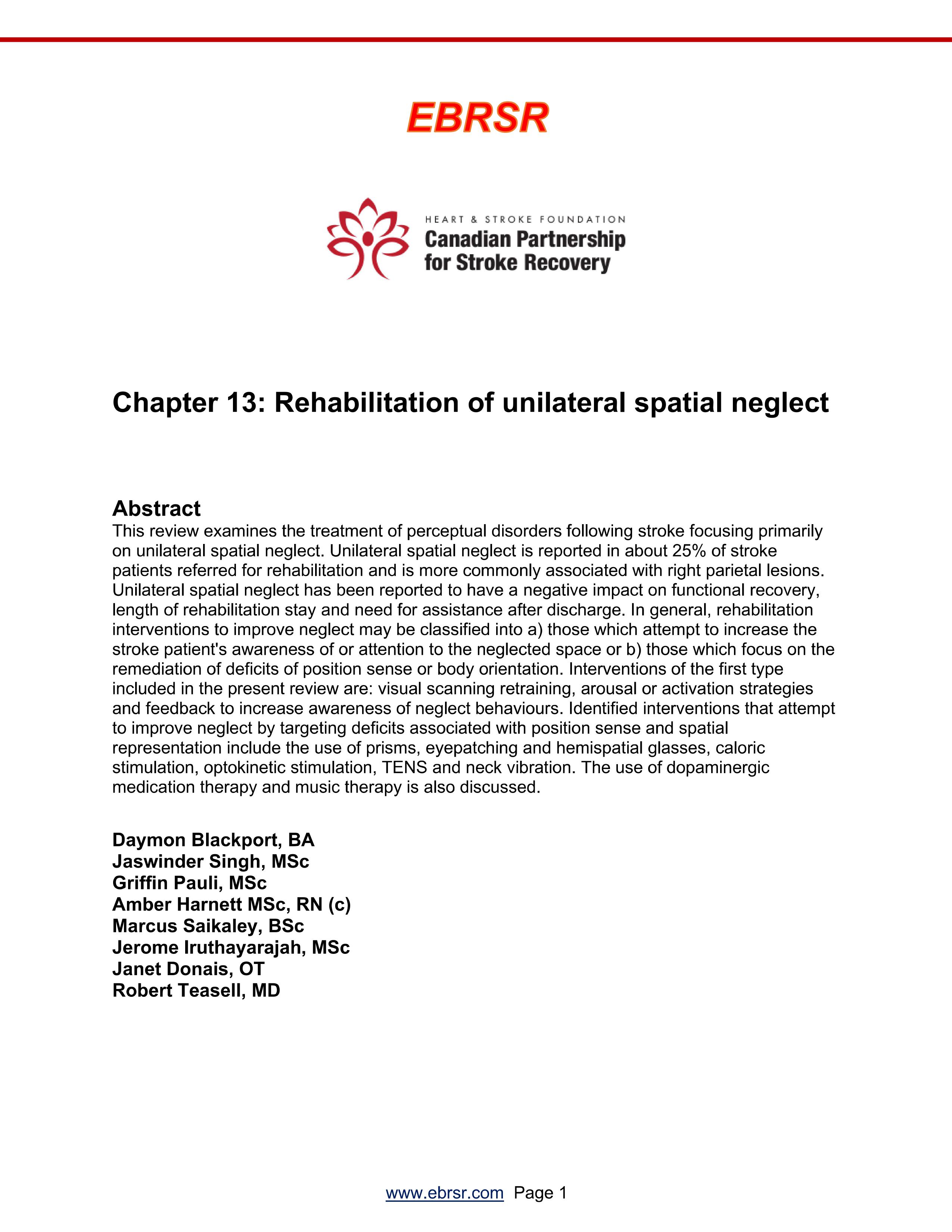Neglect and Visuospatial Disorders
Chapter 13
This review examines the treatment perceptual disorders following stroke focussing primarily on unilateral spatial neglect (USN). Unilateral spatial neglect is reported in about 25% of stroke patients referred for rehabilitation and is more commonly associated with right parietal lesions. Unilateral spatial neglect has been reported to have a negative impact on functional recovery, length of rehabilitation stay, and need for assistance after discharge. In general, rehabilitation interventions to improve neglect may be classified into a) those which attempt to increase the stroke patient's awareness of or attention to the neglected space or b) those which focus on the remediation of deficits of position sense or body orientation. Interventions of the first type included in the present review are: visual scanning retraining, arousal or activation strategies and feedback to increase awareness of neglect behaviours. Identified interventions that attempt to improve neglect by targeting deficits associated with position sense and spatial representation include the use of prisms, eyepatching and hemispatial glasses, caloric stimulation, optokinetic stimulation, TENS and neck vibration. The use of dopaminergic medication therapy and music therapy is also discussed.



